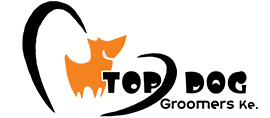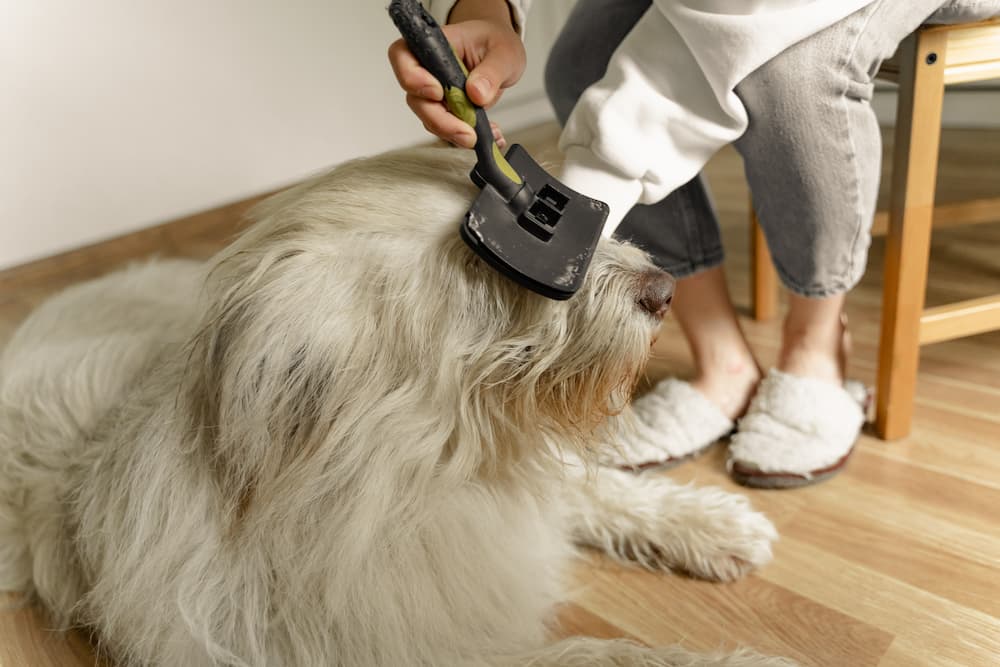Keeping your furry friends neat and clean contributes significantly to their overall health and well-being. Dogs are more likely to need regular grooming, especially if they are indoor pets.
Here are some home grooming tips for your canine companion:
Prepare your tools
When grooming your dog, try to prepare any tools you need to make it easier.
Depending on your dogs’ breed, you may need to use different brushes, combs, or gloves.
Choose a high table you can put your dog on to be at eye level with you and where you can get to otherwise hard-to-reach areas.
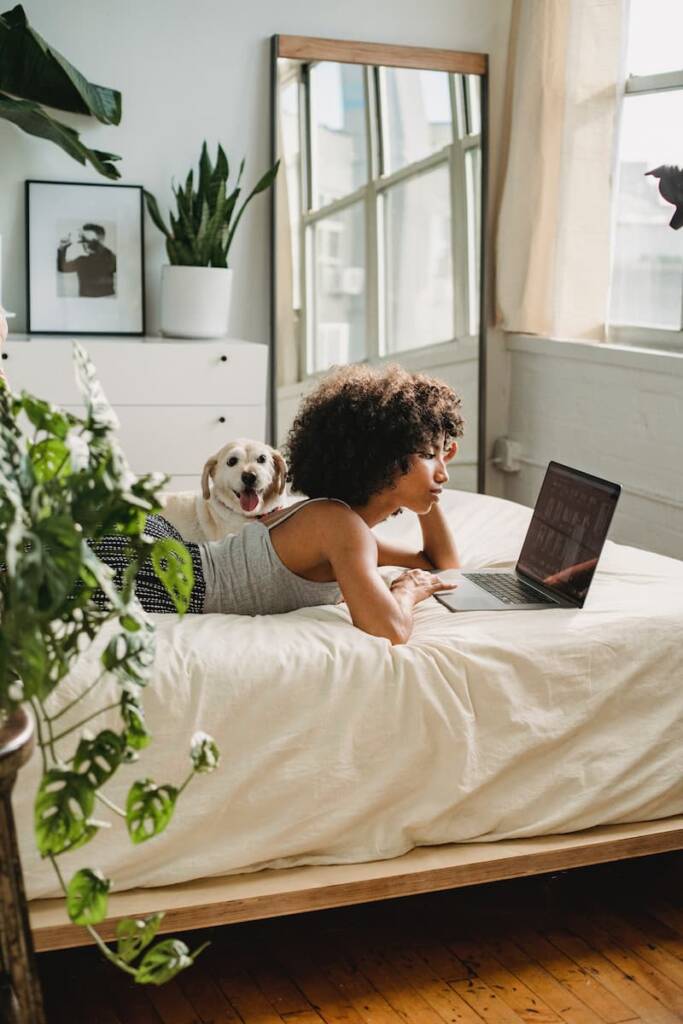
One of the most popular tools in grooming are hair clippers or trimmers, there are various types and brands on the market, but it is advisable to spend a little more on a good quality one.
When bathing your dog, use dog-friendly products, conditioners/detanglers, shampoos, and detangler sprays are available in most Kenyan pet stores.
Ensure that your dog has a clean, dry towel, preferably ones that can absorb large amounts of water like Terry towels.
Claw clippers are another helpful tool, after every two weeks; your dog should get its claws cut; however, it is strongly recommended that you allow a professional to do this if you are a beginner for the first couple of times as it can be a tricky procedure because in the base of the claw there is a blood vessel that could rupture if you cut into it.
Check your Dog’s Paws
Keep regularly checking your dog’s paws (front and hind), especially after a walk or play, as they may have foreign objects like little stones or pieces of glass lodged between the digits.
Ensure to check the paw pads as these tend to get dry and crack, which can cause your dog many discomforts. Try out Paw soothers and Paw protection balms available here (insert link to TDG products)
The hair around the Paws is also essential to groom and inspect as many particles get collected there.
Regularly Brush your Dog.
Dogs with shorter fur require a softer brush, while those with long thick hair may require stiffer brushes or detailed combs.
Brush your dogs’ fur 2-3 times a week to train them into a schedule.
If you are brushing your dog for the first time, as you brush the fur, reassure your dog that he is safe and use gentle strokes; this has a soothing effect.
Dogs pick up a lot of tiny parasites and small particles in their coats during their day; for example, nettles, insects, dust, or even food; this can also cause matting and make a dog uncomfortable.
Matted fur is unpleasant to the eye, dirty, and can sometimes be painful. Ask your vet about detangler creams or lotions that would help.
It is important to note that your dogs’ diet also contributes a lot to their fur—foods and supplements with omega-3 or fish oil help keep their coat healthy and shiny.
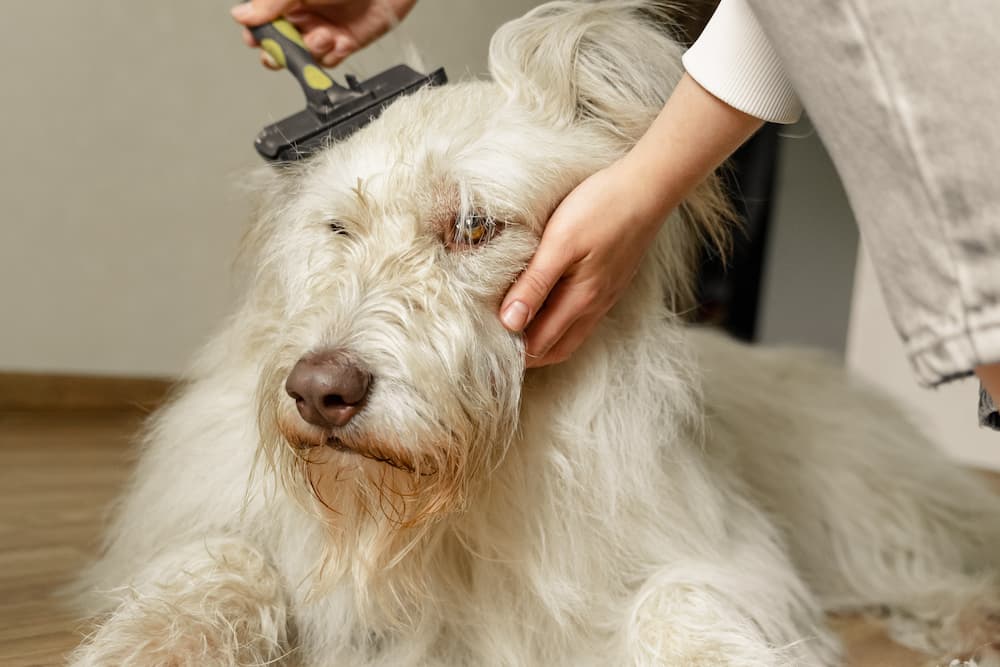
Trim your Dog’s Fur
When you trim your dogs’ fur, as in the case of brushing, it assists in removing dirt and other unwanted particles and parasites. Cutting the overgrown hair around the eyes or paws between grooming sessions helps prevent them from feeling itchy and scratching and stops them from injuring the eyes or even affecting their vision.
Many dog owners find trimming their dog’s fur tedious and stressful. They usually prefer to take it to a professional groomer.
If you feel comfortable enough trimming your dogs’ eyes, be sure to do it when your dog is calm, like at the end of the day when they have had playtime and eaten.
Use extreme caution, especially where the scissors or trimmer are close to the skin.
Bathe your Dog
As a rule of dog grooming, your dog should get a bath at least once a month. Of course, once again, this depends on the requirements for the breed of dog you have. It is recommended that dogs with longer fur need to be bathed twice or even three times a month. When bathing your pet, ensure that the water is at the same temperature as your dog; this should be between 37 to 39 °C.
While applying shampoo and rinsing, be sure not to get any water or soap in your dogs’ eyes.
A towel usually works best for shorter-haired dogs and a hairdryer for longer-haired dogs when drying.
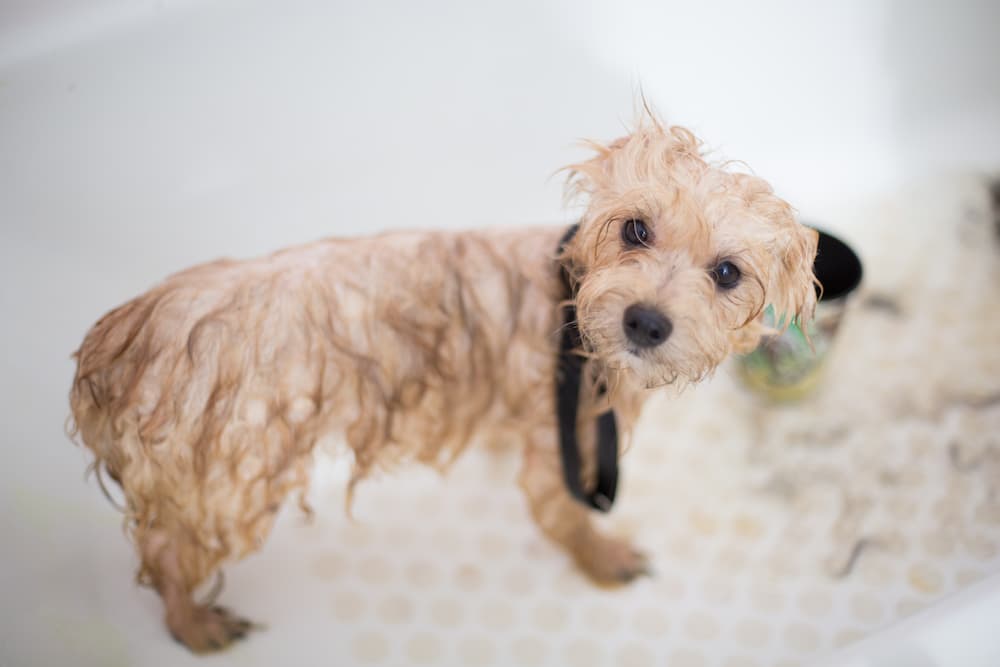
Clean your Dogs’ Eyes.
Dogs are likely to pick up a lot of bacteria and irritants from their environment. A dog’s eye will naturally clean itself by releasing tears as the tears dry, dirt and bacteria collect in the corners of the eyes and sometimes form a crust.
Dogs are occasionally unable to clear away any crusting that forms at the corner of the eye and, if not cleared away, can cause severe infection in your dog’s eyes. You may use cotton swabs, cotton pads dipped in warm water, or specially formulated eye lotion to gently wipe away any dirt or crusting around the eyes. Always use a different swab in each eye to prevent the spread of infection should any eyes be affected.
You may use eye drops to clear dust and dirt particles from your dog’s eyes; however, please consult your vet before attempting this.
Regularly Check and Clean your Dog’s Ears
Just as we humans collect wax and dirt in our ears, so do our dogs’ ears.
Dirty dog ears can cause your dog serious infections, so you must check their ears as often as possible.
Look out for discharge, foul odors, and discoloration or redness. All healthy dogs do have wax buildup. However, if you notice excessive amounts of wax, pus, a bad smell, or if your dog displays any signs of discomfort such as: showing imbalance, repeatedly shaking their heads, or persistently scratching at the ear, seek medical help for your pet as they have an infection.
To learn more about the causes, symptoms and treatment of ear infections click here.
Grooming is a beautiful way to bond with your pet. It builds trust and allows you to train your dog to enjoy its grooming sessions. Just give him lots of praise and take a break for doggy cuddles and kisses, and you’re on your way!
